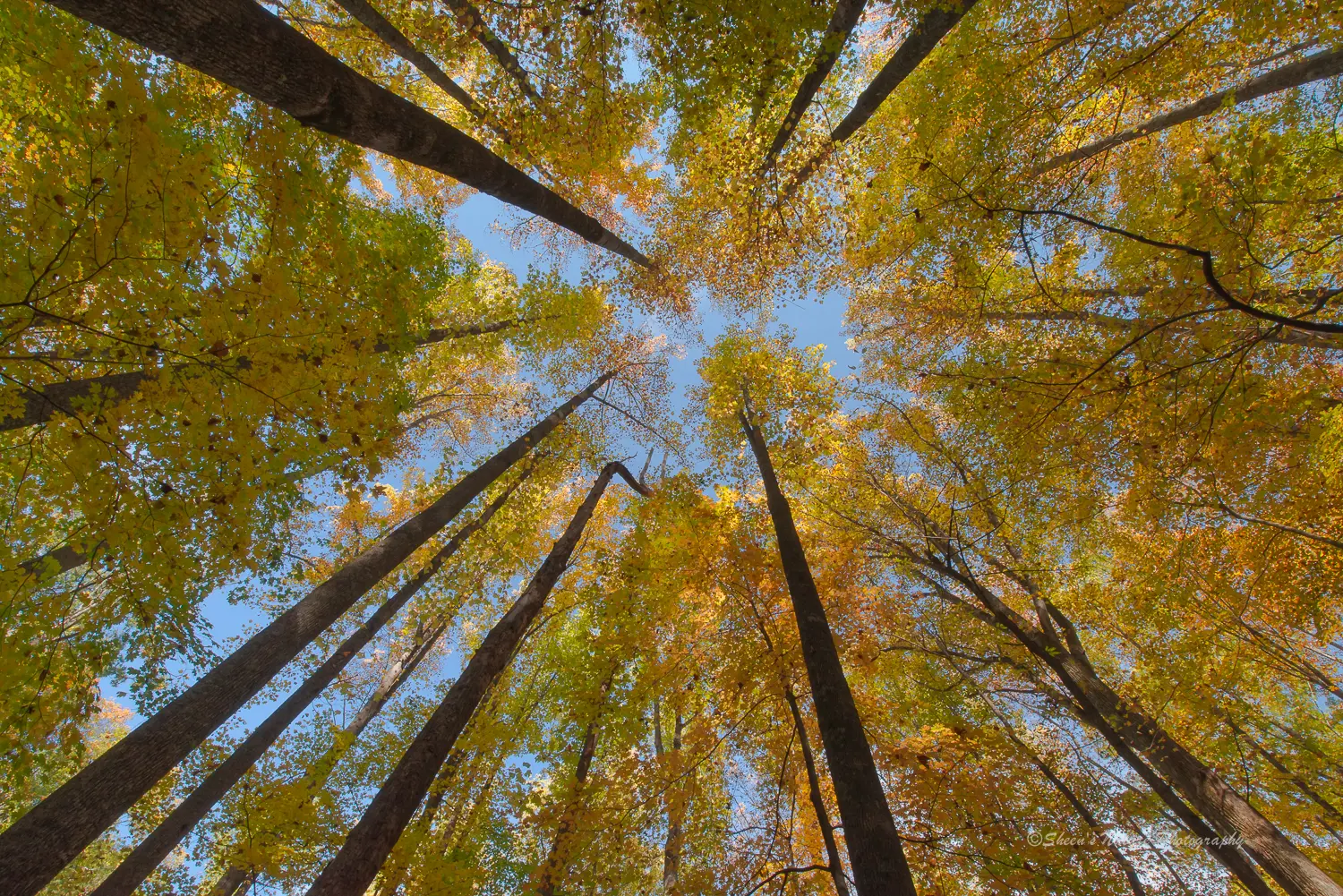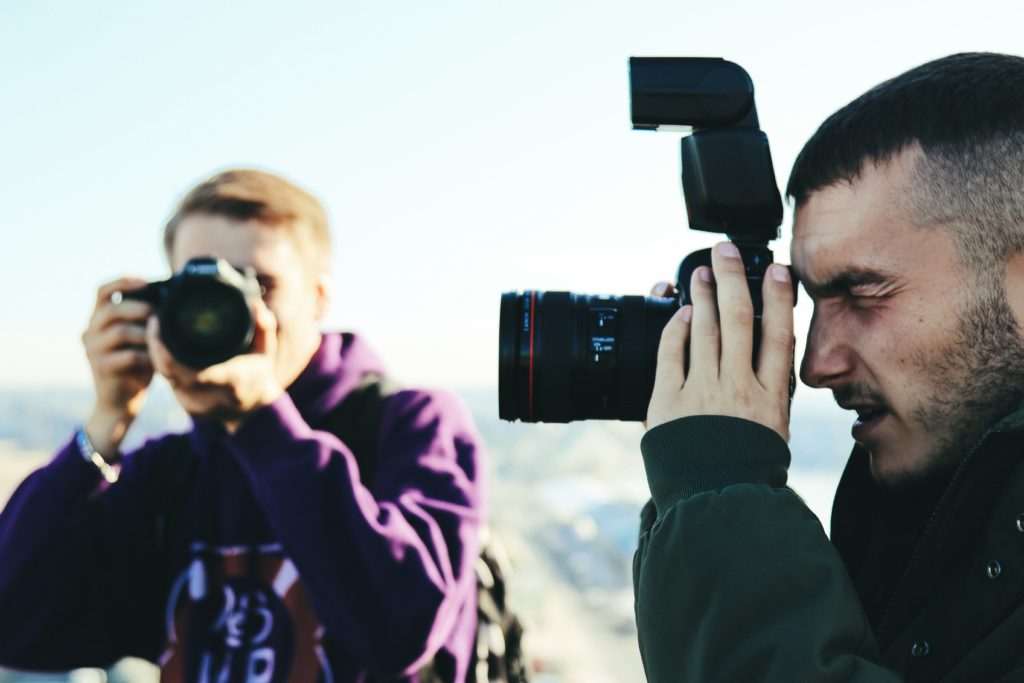Sweeping landscapes, beautiful architecture, powerful waterfalls, vanishing points and creative imagery are some of the beautiful views that you can capture using wide angle photography. The good news about wide angle photography? It allows you to capture a large area. The potential down side of wide angle photography? It captures everything in a large area.
The “Morning Storm” image below was captured at sunrise using a 14-24mm lens at f/22. To capture the detail and movement of the clouds a shutter speed of 2.5 seconds was used.

Photo by Sheen's Nature Photography
Wide angle lenses require an adjustment of perspective and honed image composition. This is particularly true if you've been working with normal-range and telephoto zoom lenses for a period of time.
What is it about the scene that grabs your attention? Is it wide and vast, with a lot of color, depth and detail. Or, is it a relatively contained space with a subject complemented by the surrounding details? The following four tips will help simplify wide angle photography.
We'll briefly cover 1. lenses, 2. composition, 3. creativity, and 4. useful tools for optimal quality.
1. Lenses
Wide angle photography lenses use focal lengths of 35mm or less (using a full frame camera). These lenses may be primes (fixed focal length), such as a 35mm, 28mm, 24mm, 21mm, 20mm or 14mm. Wide angle lenses also are available as zooms. A couple of examples include Nikon's 14-24mm Canon's 16-35mm, Sigma and Tamron's 17-35mm.
2. Composition
A. The Unwanted Fifth – Wide angle lenses take in a big view. And while you may use the rule of thirds or fourths, you may want to consider the unwanted fifth. This fifth includes distractions that may not be noticed at the moment of taking the picture. Here's two examples:
Shadow invasion – the sun is behind you, in a wide angle image, your shadow – your head, even your whole body may appear in a corner or bottom of the shot.
To see the sky…or not – The sky filled with fluffy clouds may be a beautiful complement to the scene. On the flip side, in that nature shot of a waterfall, or fall foliage in the woods, too much sky (or any use of sky) can take away from the subject. Take images with different angles, views and review the scenes back on the camera's monitor while you work.
B. Large Depth of Field – Wide angle lenses naturally have a larger depth of field. A smaller aperture (such as f/16) will get more of the image in focus.
Recently I attended a workshop in the Smoky Mountains of Tennessee led by Richard Bernabe. I captured this image with a 14-24mm lens using some of the coaching techniques he was sharing during our workshop (a workshop article is coming soon!). To slow the movement, a shutter speed of 4/10 of a second combined with an f/stop of f/16.

Photo by Sheen's Nature Photography
3. Creativity
Leading lines in wide and ultra wide lenses pull the viewer from the front to the end of line (pardon the pun). Railroad tracks, piers, wooden beams of a ceiling, and even non-defined fall lines like the curved angles of a waterfall that run from the foreground to background add significant depth.
With wide angle and in particular, ultra-wide (24mm and under) also consider using a distorted perspective. For fun take some images when the camera is not perpendicular or level to the horizon.

Photo by Sheen's Nature Photography
4. Helpful tools
A. Tripod – A larger depth of field such as an f/16 also means that the shutter speed is a bit slower. Many wide angle scenes also take advantage of low-light situations requiring longer shutter speeds. A tripod is definitely an essential tool in landscape and wide angle photography. The added benefit of using a tripod is that it allows you easily move and hold a scene while evaluating composition.
B. Cable release – We've established our composition, lowered our shutter speed and ISO. Keep the image as clear as possible by using a cable release versus pressing the shutter button.
C. Histogram – When playing back your image, refer to the histogram to see if adjustments are needed. The two second inspection is worth it!
D. In-camera tilt sensor – When photographing horizontal and vertical lines, symmetry may be an important part of the story. Spot check the camera's positioning (i.e. is the horizon straight, is the camera level with the horizon line) using the in-camera tilt sensor. If your camera does not have one, use the bubble level on your tripod. Ensuring your camera is level both horizontally and perpendicular will keep lines straight and minimize distortion.

Photo by Peddhapati
The following 3 reminders are helpful in composition and/or choosing whether or not a wide angle lens is the right option.
- The subject is easily over-powered by all the other surrounding ‘stuff'. It's easy to get too much of everything you don't want and not enough of what you want.
- Far away points of interest will appear very small, they may not even be noticed. If it's small in the lens, it will be even smaller on the screen or print.
- Some subjects (such a buildings, architecture) need to be precise or they look very distorted in wide angle photography. The horizontal and perpendicular gage is a helpful tool Those same images may produce interesting, creative shots through altering the perpendicular perspective.
In summary, wide angle photography captures large, expansive scenes and a lot of detail in shorter distance photography. Added benefits include expanding composition and image inspection skills.





1 Comment
onem ore tip for wide angle lenses is to get really close to an object in the foreground ir you don’t have other features in a scvene like lead-in lines or patterns or whatever- including an object of interest right up close to the fotrefront lends immediate interest for the viewer who is lead into the scene by watnign to see what’s behind or in back of the object